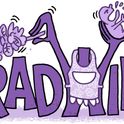the illusion is irresistible. Behind every face there is a self. We see the signal of consciousness in a gleaming eye and imagine some ethereal space beneath the vault of the skull, lit by shifting patterns of feeling and thought, charged with intention. Some kind of essence. But what do we find in that space behind the face, when we look? Nothing but blood, bone and brain. I know, I've seen. You look down into an open head, watching the brain pulsate, watching the surgeon tug and probe, and you understand with absolute conviction that there is no more to it. There's no one there.
Twenty years ago, I began my clinical training at a rehabilitation hospital for people with neurological disorders. One of the patients was a 17-year-old boy who had stepped into an empty lift shaft through which he fell three floors, almost to his death. The surgeons had done their best to piece him together, but the dome of his shaven head was now asymmetrical, convex on the right, concave on the left, with a deep oval depression like the shell of a hard-boiled egg cracked with a spoon. Beneath this the face worked relentlessly, writhing with anger and dread. He would growl and grunt. Sometimes he would make a howling, wailing noise but, apart from occasional volleys of obscenity, he was incapable of speech. This is not uncommon. People otherwise without ordinary speech as a result of brain injury sometimes have the capacity to summon up the vilest gobs of abuse. I didn't know that at the time. It came as a shock. Sometimes they can also sing, but this boy never sang. He sat contorted in his wheelchair, head turned sideways and back at an uncomfortable angle, limbs buckled with spasticity, a stream of saliva dribbling from the corner of his mouth. And due to a quirk of damage to his nervous system he was continually troubled by a painful erection. The young women who surrounded him-nurses, physios and occupational therapists-pretended not to notice.
I felt pity for him, but also revulsion. As a raw trainee, not yet desensitised, I found him terrifying and grotesque. What disturbed me most was the flickering screen of his face, the bleak images of a soul in torment. Or so I imagined. Then I began to consider what might remain of a "soul" or a "self." Beyond fear and anger, his features would at times arrange themselves into meaningless emotional composites, or degenerate into some other, abstract, choreography. I began to doubt that there was anything at all going on behind that face. He should have been allowed to die, I thought, and not just for his own sake. How did he look to his mother? The chaos of his face wore me down, drained my sympathy. It broke the rules. The face must allow public access to the private self, through an orderly configuration and a universal system of signals. It's an ancient convention of the human race. But this young man's facial displays worked like a subterfuge, denying knowledge of what lay behind.
Then, one day, I happened to be around when the boy was visited by his mother, and I watched as she cradled his broken head in her arms. For the time that she was with him, but not much longer, an extraordinary transformation came over his face. It became still. The rage and the random mechanical twitching subsided, and he seemed to regain his humanity. The whole was greater than the sum of its parts. Maybe it was a failure of imagination which led me to sense a seeping-away of the boy's self once his mother had gone, but the capacity I discovered in myself, the capacity to see a fellow human being as less than a person, was an appalling revelation. In such circumstances, how are we to distinguish failure of empathy from valid observation? Perhaps they amount to the same thing.
Now my own son has turned 17, the same age as the eggshell boy was then. He was in the void of pre-birth when our friend made his lonely descent through the lift shaft. I have a memory of being with my son when he was four years old. It is winter. We have left the warmth of our house for the freezing night air. There are few lights in the village and the sky is full of stars. We're hardly out of the front door when he starts coughing. Are you all right? I ask him. It's okay, he says, I think I just swallowed some dark. I realise that he has the notion that darkness is a substance. It will make you choke if you swallow too much in one go. I could have put him straight with some prosaic account of the coughing reflex. But I didn't. I stashed away the treasure of the image, and left him with the version of reality fashioned by his own infant brain.
Reality is under constant review. Aristotle, 23 centuries ago, believed that the heart must be the source of mental life. The function of the brain, he thought, was to cool the blood. He built his cosmology on the belief that the earth stands motionless at the centre of the universe. He was utterly wrong on each count, but his beliefs served him well enough. And although we now know immeasurably more than Aristotle about the body and the structure of the cosmos, we should not delude ourselves by thinking that we have arrived at some endpoint of intellectual evolution. We still live by intuitions and illusions, especially when our thoughts turn inward. The bright, intangible qualities of subjective experience cannot be reconciled with the dark substance of the brain. We still see the vision of minds in the light of other people's eyes. Cosmologies come and go, but if this illusion begins to fade then so does the observer. The illusion is what we are. n












